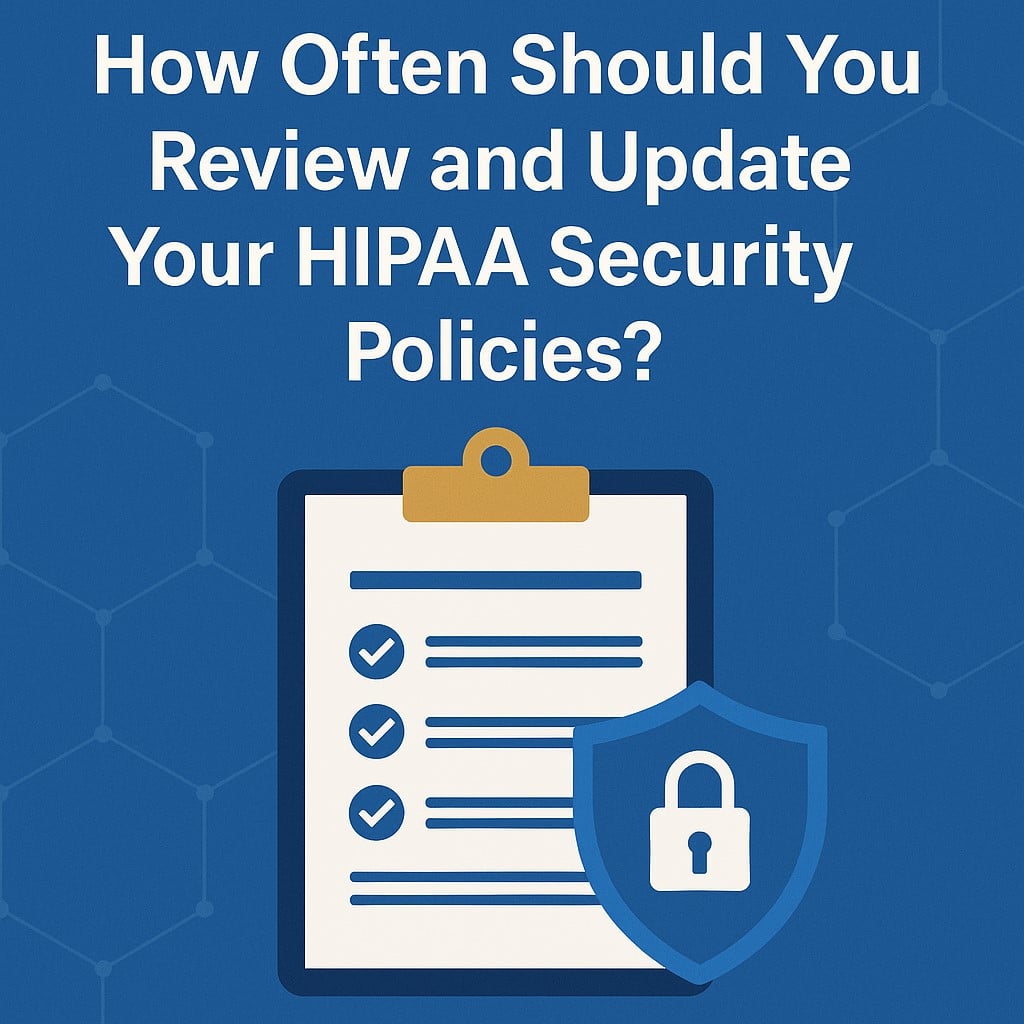When it comes to healthcare compliance, maintaining up-to-date HIPAA Security Policies is essential for safeguarding Protected Health Information (PHI) and avoiding costly violations. Many organizations ask the same question: How often should HIPAA security policies be reviewed and updated? The answer lies in understanding HIPAA requirements, industry best practices, and your organization’s unique risk profile.
Why Reviewing HIPAA Security Policies Matters
HIPAA requires covered entities and business associates to implement administrative, technical, and physical safeguards to protect PHI. However, policies are not meant to be static. Technology, threats, and business operations constantly evolve, which means outdated policies could leave your organization exposed to risks such as:
-
Data breaches and cyberattacks
-
Unauthorized access to PHI
-
Fines and penalties from the Office for Civil Rights (OCR)
-
Loss of patient trust and reputation
Regularly reviewing and updating your HIPAA security policies ensures that your compliance efforts keep pace with new risks and regulations.
HIPAA Requirements for Policy Reviews
The HIPAA Security Rule does not prescribe a fixed timeline (such as annually) for updating security policies. Instead, it requires organizations to review and modify their policies as needed based on environmental and operational changes. In practice, this means:
-
Periodic Reviews: At least once a year is considered best practice.
-
Event-Driven Reviews: Updates must be made when significant changes occur, such as:
-
New technology implementation (e.g., cloud migration, EHR system upgrade)
-
Changes in organizational structure or workforce
-
Discovery of new security threats or vulnerabilities
-
Regulatory updates or OCR guidance
-
Best Practices for Reviewing HIPAA Security Policies
To stay compliant and secure, consider the following best practices:
-
Annual Comprehensive Review
Schedule a full policy review once a year to ensure documentation is still relevant, accurate, and aligned with HIPAA requirements. -
Post-Incident Updates
If a security incident or breach occurs, immediately revisit your policies to close any gaps. -
Monitor Regulatory Changes
Stay informed about updates from the U.S. Department of Health and Human Services (HHS) and adjust policies accordingly. -
Involve Key Stakeholders
Include IT, compliance officers, legal advisors, and management in the review process to ensure all risks are addressed. -
Document Changes
Keep detailed records of when policies were reviewed, what changes were made, and who approved them. This demonstrates due diligence in the event of an OCR audit.
Benefits of Regular Policy Updates
-
Stronger data protection and reduced risk of breaches
-
Improved staff awareness and training
-
Demonstrated compliance during HIPAA audits
-
Increased patient confidence in your organization’s security practices
Conclusion
So, how often should you review and update your HIPAA Security Policies? At a minimum, conduct a thorough review annually, but always be prepared to update policies after significant changes in technology, operations, or regulations. Staying proactive not only ensures HIPAA compliance but also strengthens your overall cybersecurity posture.
By making policy review and updates a regular part of your compliance program, you protect patient data, avoid penalties, and foster a culture of security within your organization.
